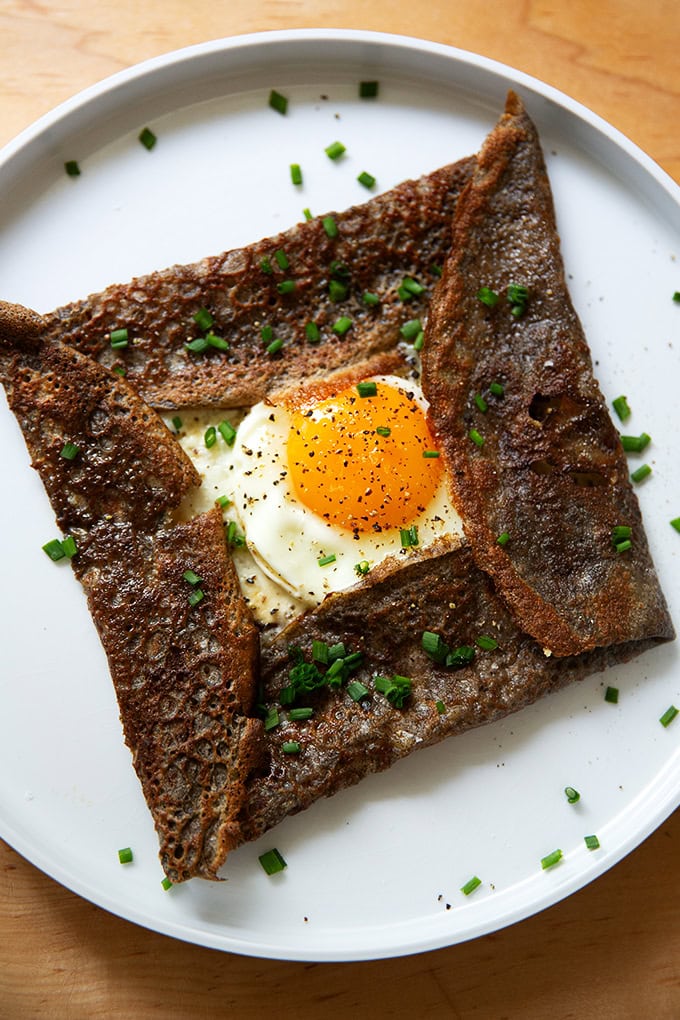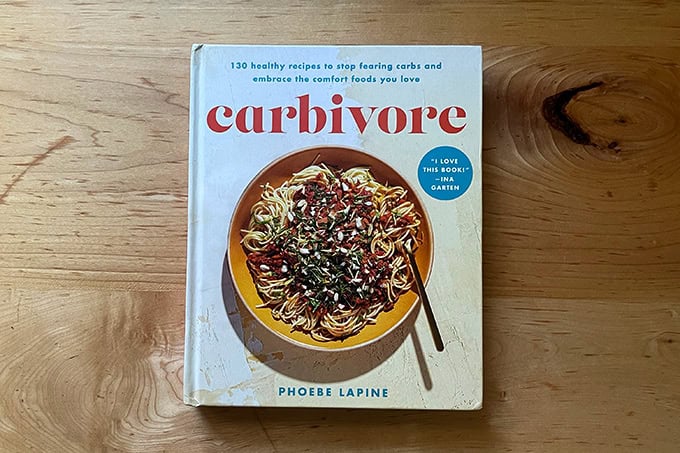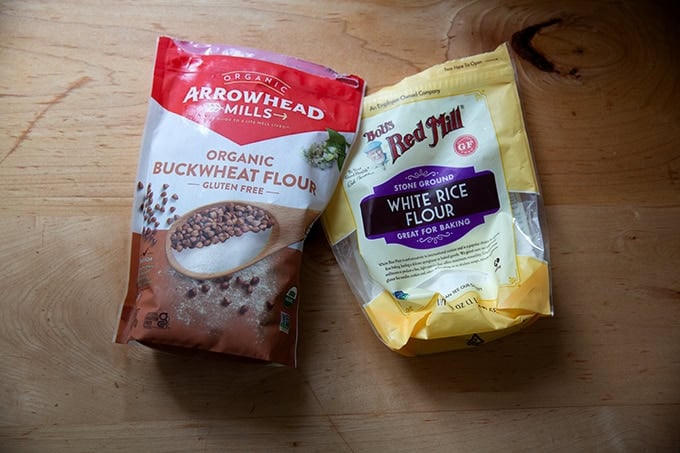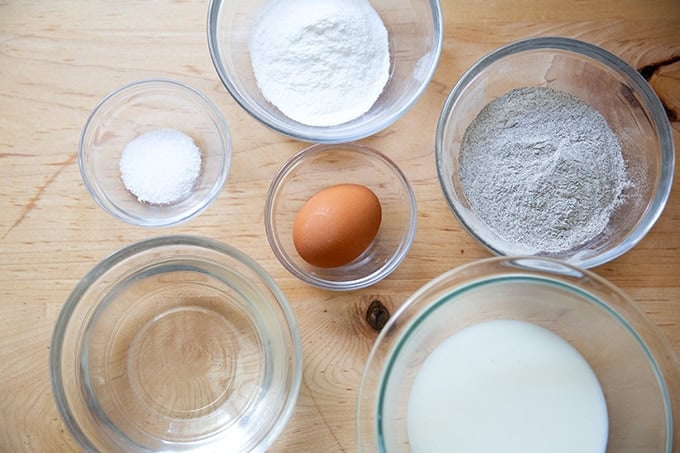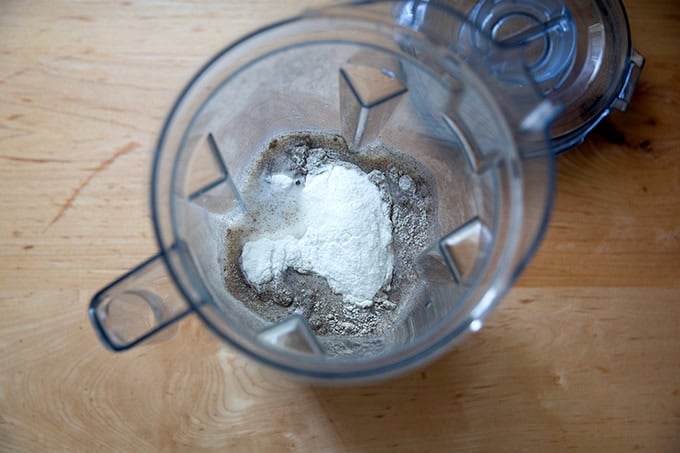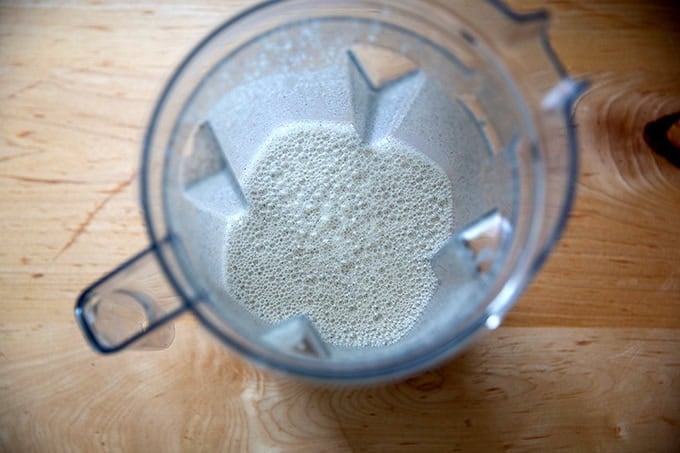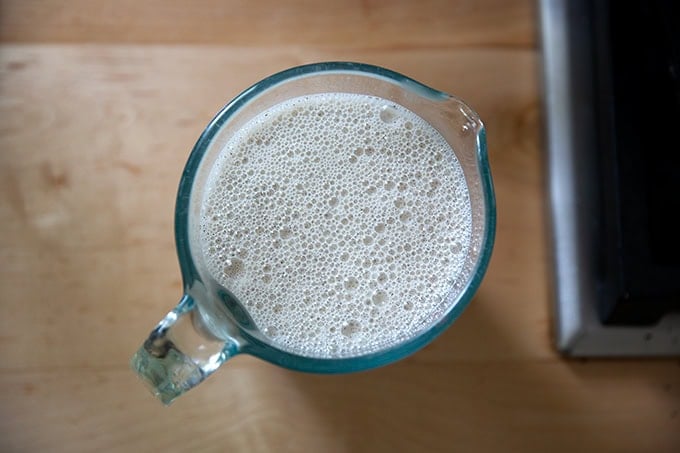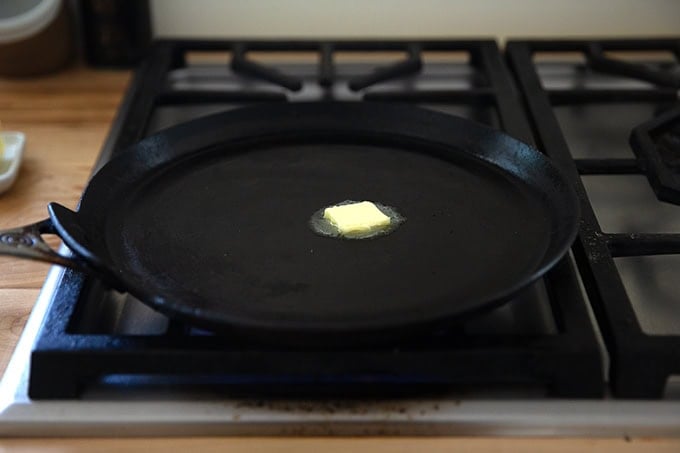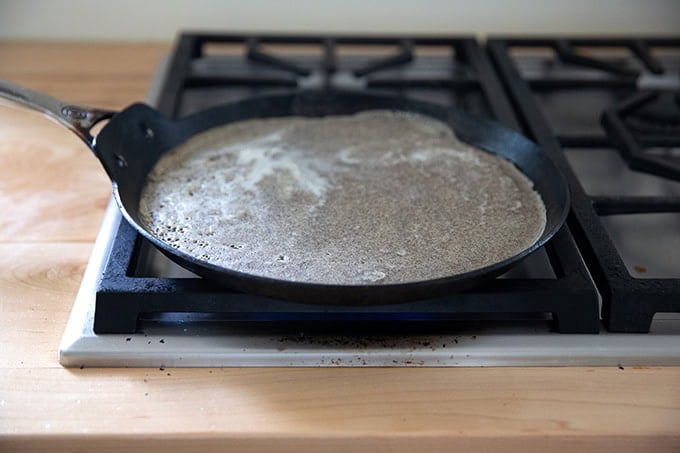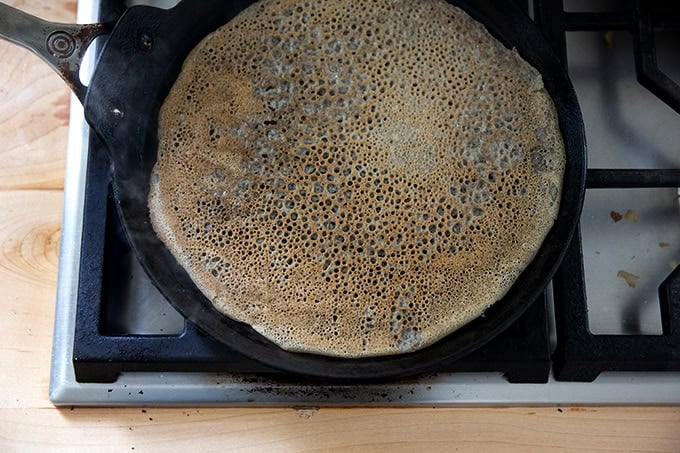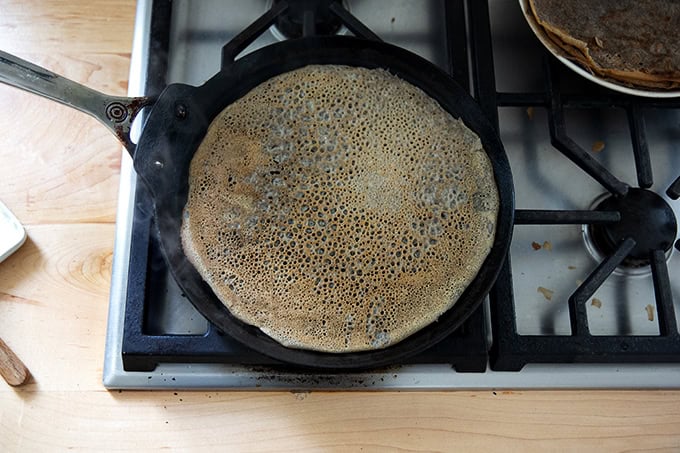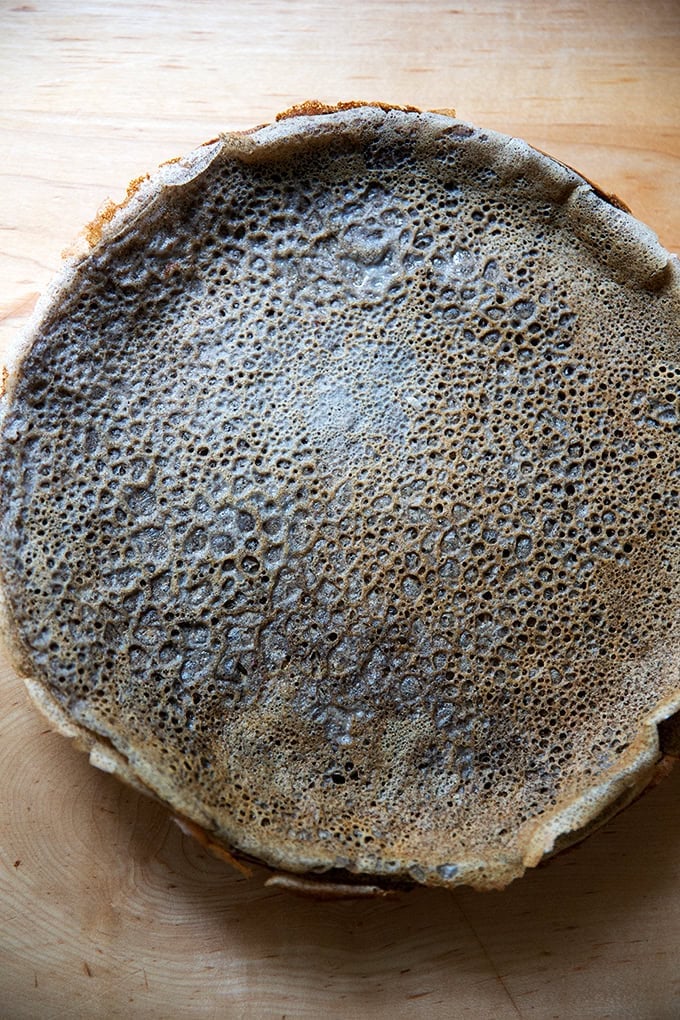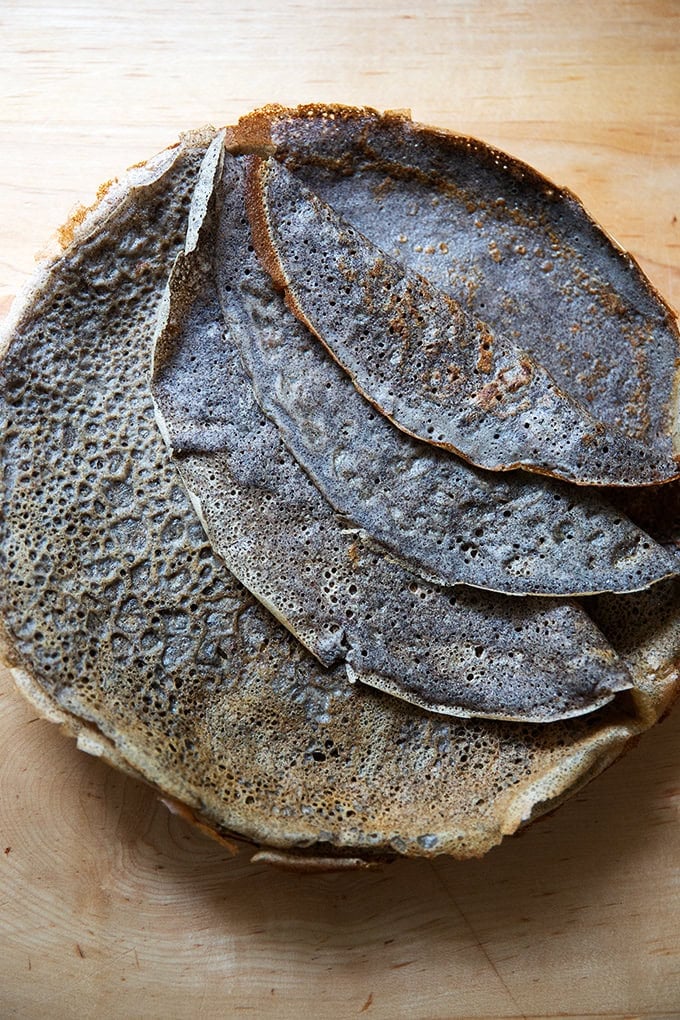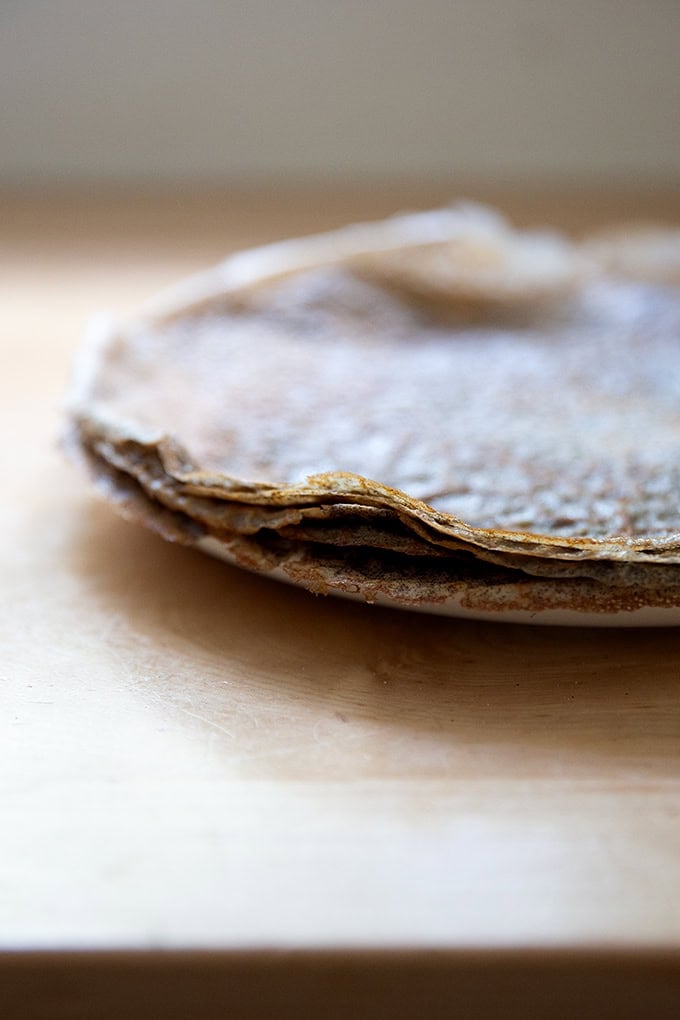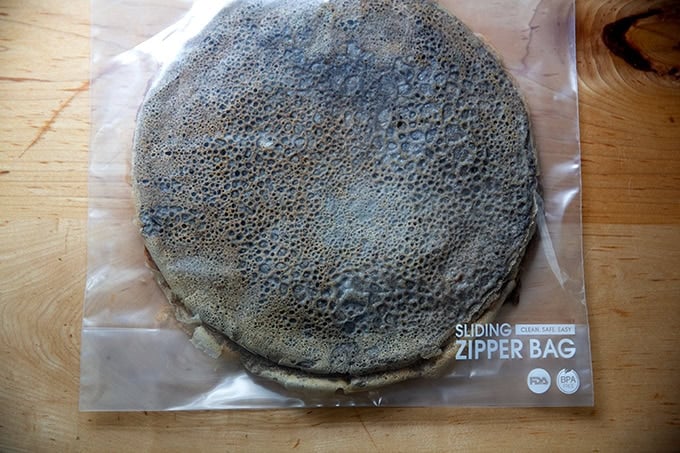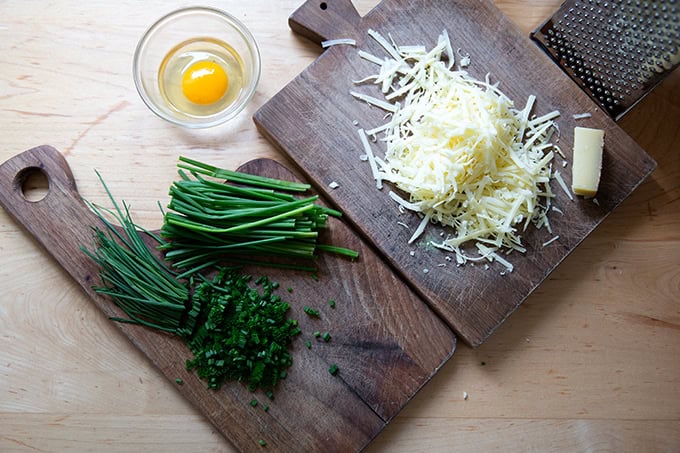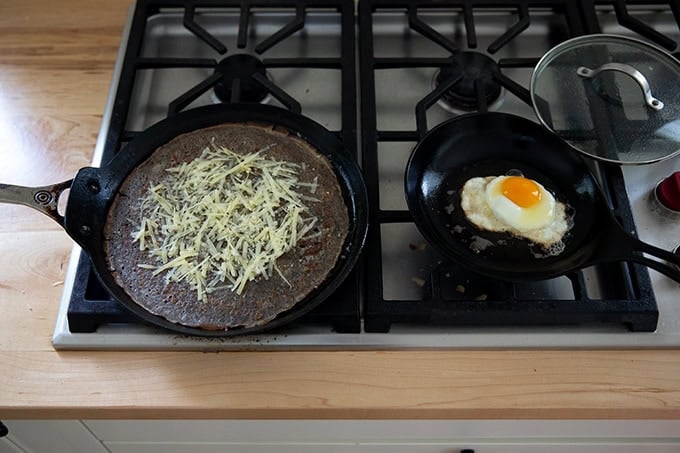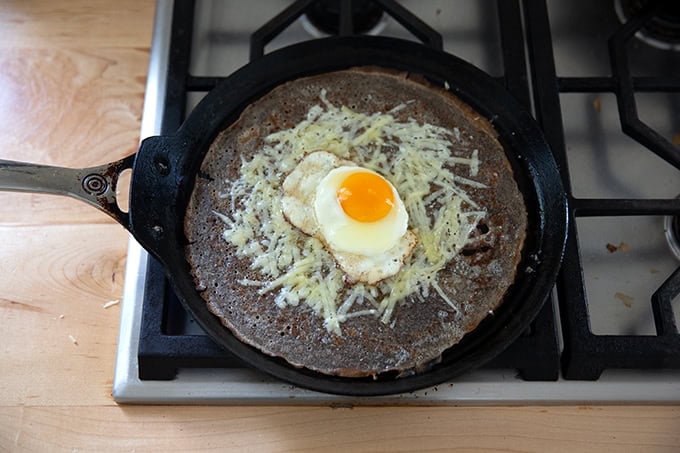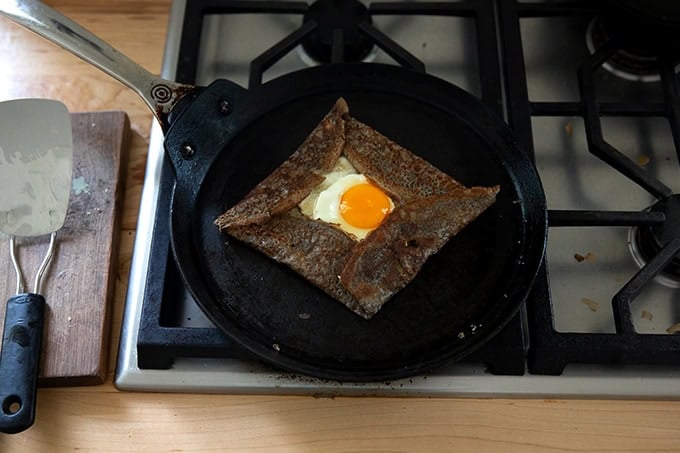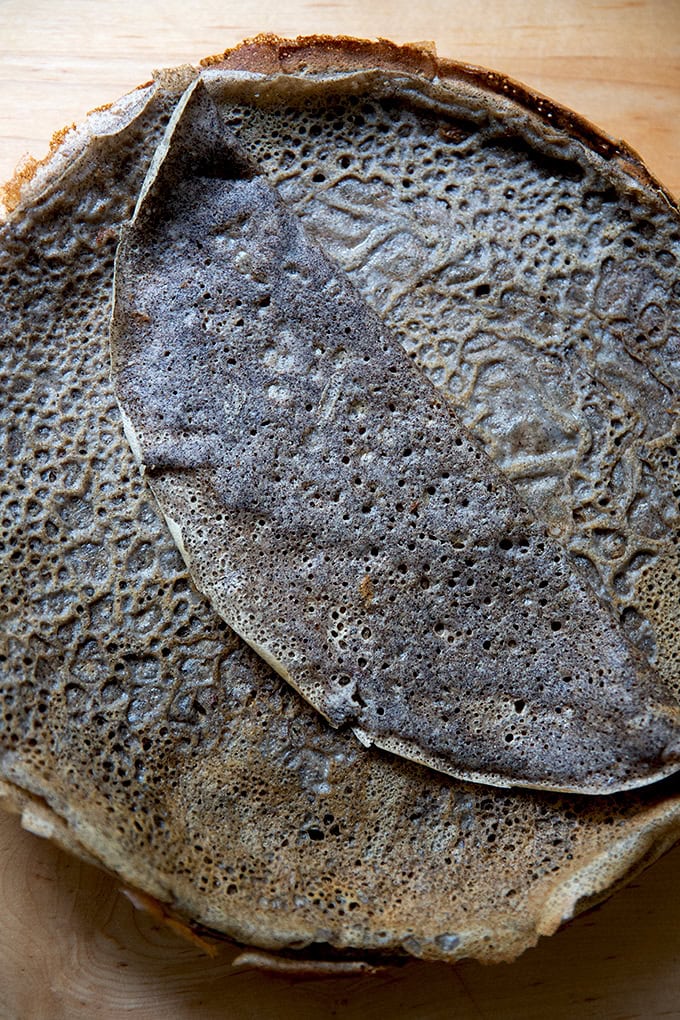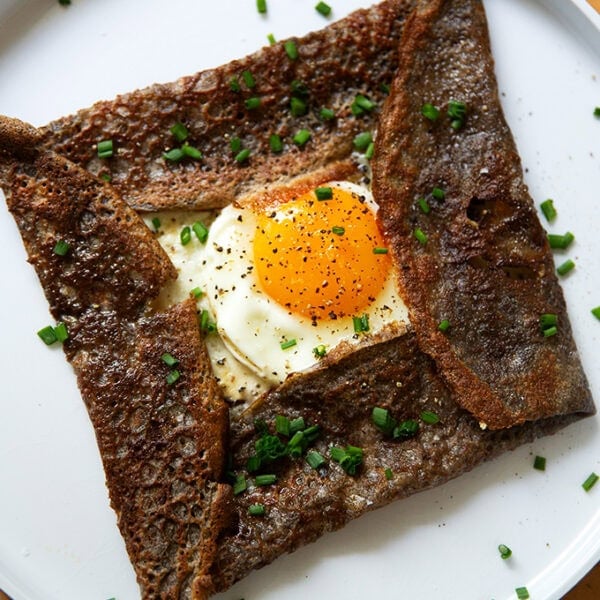I have been wanting to learn how to make buckwheat crepes since returning from Paris nearly 7 years ago. But having only had partial success with traditional crepes over the years, I felt intimidated by the idea of making them with buckwheat flour, which is gluten-free, and which I worried might require even more finesse to get right. So when I came upon a recipe for buckwheat crepes in Phoebe Lapine’s new book, Carbivore, in which the process was described as something that “sounds intimidating” but is “actually quite easy,” I felt encouraged. Phoebe’s recipe calls for a mix of buckwheat flour and rice flour, and the batter, unlike that for many crepe recipes, does not require any resting before use. I gave the recipe a go immediately and was shocked by how quickly the batter, which is essentially 5 ingredients, came together and how well the crepes turned out. I mangled a few initially, but once I found my rhythm — once I found the right amount of batter to use given the size of my skillet, once I learned the visual cues signaling doneness, and once I dialed the heat in properly — the process was easy. Lacy and light in texture, these crepes taste nutty and earthy — buckwheaty!—and upon being reheated and filled with whatever your heart desires, they crisp up, too, and darken in hue. I find them irresistible, and I hope you will, too.
Buckwheat Crepes: Tips for Success
The crepe-making process takes a little bit of practice to get right, and you will likely make one or two bad ones before you find your rhythm. Here are my tips for success:
Use a digital scale to measure: It is the only way to ensure you are measuring accurately. Use a nonstick skillet. I love this one. Be patient. One place the process can go wrong is flipping the crepe too quickly. If the batter isn’t set and you try to flip it, you’ll be left with a mangled mess of partially cooked batter. Be patient, set a timer for 2 minutes, and look for the crepe edges pulling away from the sides before you flip. Find the right amount of batter given the skillet you are using. If you use too much batter, the crepes will be too thick; if you don’t use enough batter; they’ll be too fragile. I find a heaping 1/3 cup to be perfect for my 12-inch skillet but you may need to use slightly more or less. Find the right balance of heat. You may need to adjust your burner throughout the process to find the right amount of heat. If it’s too hot, the crepes will get too crispy; if it’s not hot enough, you won’t get that appealing lacy-looking texture, which doesn’t matter from a taste perspective only a visual one.
Carbivore
As noted, this recipe comes from my friend Phoebe Lapine’s new book, Carbivore, which is loaded with good information about carbs and why they’ve become so vilified and misunderstood over the years. In Carbivore, Phoebe teaches us that “carbs don’t have to be the enemy of [our] blood sugar or hormone health, nor are they the secret agents of inflammation.” All the dishes are completely gluten-free but easily adaptable to whatever pasta, bread or other carbs you have on hand. As a carb lover, this book speaks to my heart.
Buckwheat Crepes, Step by Step
For this recipe, you’ll need both buckwheat flour and white rice flour. Additionally, you’ll need an egg, salt, water, and milk. Combine all ingredients in a blender. Blend until frothy and combined. Transfer to a smaller pourer — I like to use my 2-cup measure here: Melt a teaspoon of butter over medium heat in a 12-inch nonstick skillet. I’m using this Le Creuset crepe pan. Add roughly 1/3 cup of the crepe batter — I find I need a heaping 1/3 cup to fill the skillet in a thin layer. Cook for about 2 minutes or until the edges separate from the sides of the pan; then… … flip it. I find my hands to be the best utensil here… be careful/don’t burn yourself. Cook for another minute more. Repeat with the remaining batter until… You have a stack of crepes on your hands. This recipe yields 5 large crepes (plus a small one) but you can scale it up as needed. They will be paper thin. Transfer to an airtight bag and freeze for up to 3 months or use immediately as in the egg-and-cheese “galettes” below.
Egg & Cheese Crepe (AKA Galette Complete)
In the States, if you order buckwheat crepes for breakfast, you’ll get something like the below-pictured ensemble. In France, they’re referred to as “galettes completes” or “galettes Bretonnes”. Gather your ingredients: I’m using Gruyère, chives, and an egg. To make one, return a buckwheat crepe to the skillet you used to make the crepes and set it over medium heat. Top it with some grated Gruyère cheese. Fry an egg in another skillet: Slide the egg onto the crepe: Fold the sides in: Transfer to a plate and shower with chives or herb of choice: Friends! These are fun. I’d love for you to try them. 5 from 3 reviews
Ingredient Notes:
For best results, use a scale to measure. I am using this 12-inch nonstick crepe pan, which I love. Salt: If you are using Morton kosher salt or sea salt use half as much by volume or the same amount by weight. Also: the original recipe calls for 1/4 teaspoon of salt, but I love salt and so am using a little bit more. Feel free to adjust the salt amount to taste. Milk: I use 2%; Phoebe says you can use whole milk or nondairy milk.
Process Notes:
This crepe-making process takes some practice and you will likely make one or two bad ones before you find your rhythm.
Where the process can go wrong: flipping too quickly. If the batter isn’t set and you try to flip it, you’ll be left with a mangled mess of partially cooked batter. Be patient, set a timer, and look for the crepe edges pulling away from the sides before you flip. Tip for success: Find the right amount of batter given the size of the skillet you are using. If you use too much batter, the crepes will be too thick; if you don’t use enough batter; they’ll be too fragile. I find a heaping 1/3 cup to be perfect for my skillet but you may need more or less. Final tip: Find the right balance of heat. You may need to adjust your burner throughout the process to find the right amount of heat. If it’s too hot, the crepes will get too crispy; if it’s not hot enough, you won’t get that appealing lacy-looking texture, which doesn’t matter from a taste perspective only a visual one.
